On September 1, the academic seminar “Power Market Development Facilitates High-Proportion Renewable Energy Growth — Toward a Low-Carbon Future”, jointly organized by Tsinghua University and the China Energy Research Society, was held at Tsinghua University. The seminar focused on core topics such as power market development and low-carbon energy transition, the interaction between power markets and carbon markets, and new ancillary service systems. Through keynote speeches, roundtable discussions, and interactive exchanges, the event explored innovative pathways for the synergistic development of high-proportion renewable energy and power market mechanisms.
The seminar was chaired by Associate Researcher Guo Hongye of the Department of Electrical Engineering and Applied Electronics (EEA), Tsinghua University. Invited experts and scholars included Li Zhu, Deputy General Manager of Beijing Electric Power Trading Center and Deputy Director of the Power Market and Carbon Market Committee of the China Energy Research Society; Prof. Michael Pollitt of the University of Cambridge; Prof. Ross Baldick of the University of Texas at Austin; Prof. Jing Chaoxia of South China University of Technology; Han Fang, Deputy Director of the Planning and Development Department of the China Electricity Council; Xu Qingyu, Associate Researcher at the Smart Energy Research Center of Huairou National Laboratory, among others. The opening remarks were delivered by Prof. Kang Chongqing, Dean of Tsinghua EEA and member of the Power Market and Carbon Market Committee of the China Energy Research Society, and Sun Zhengyun, Vice Chairman and Secretary-General of the China Energy Research Society. Prof. Sun Kai, Deputy Dean of EEA, also attended the seminar.

[Expert Remarks]
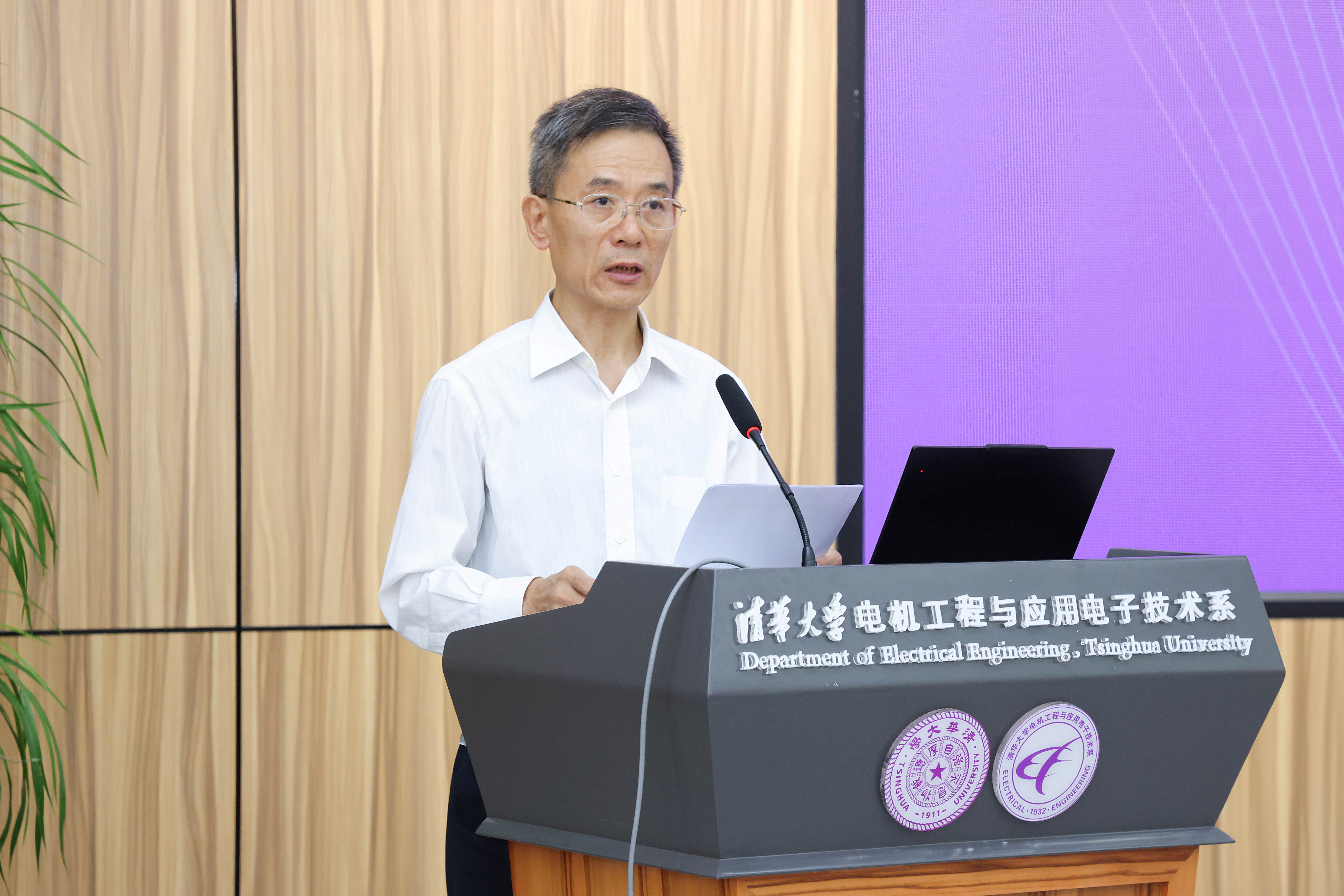
In his remarks, Sun Zhengyun emphasized that the development of high-proportion renewable energy is a mission of the era. The intermittency and uncertainty of wind and solar resources increase the pressure on power system security and supply, raising the cost of system regulation. Unlocking the regulation capabilities and potential of all stakeholders, he noted, is key to the development of power markets. On one hand, scientifically designed market mechanisms are needed to incentivize flexibility provision from thermal power, hydro, energy storage, and consumers to enhance system resilience; on the other hand, coordinated planning of renewable energy guaranteed consumption and market-based transactions can enhance value and ensure fair competition. Furthermore, capacity markets and reliability mechanisms are required to ensure adequacy and emergency resilience under high renewable penetration, safeguarding energy security.
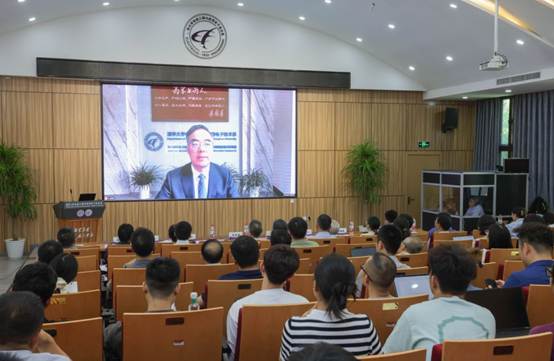
Prof. Kang Chongqing stated that with the global energy structure accelerating toward green and low-carbon transformation, China’s renewable energy capacity continues to rise. High-proportion renewable energy integration places higher demands on the safe and stable operation of power systems. Power markets play a crucial role in mitigating curtailment challenges, balancing safety and efficiency, and driving energy transition. In recent years, China’s power market construction has steadily advanced, with multi-product, multi-temporal-scale trading systems improving, diverse participant interactions gradually established, and a unified national power market system nearing initial formation. Regions in China actively explore market-oriented renewable energy reforms to address the structural conflict between low marginal cost and high system cost, promoting a shift from policy-driven to market-driven renewable energy development.
[Keynote Speeches]
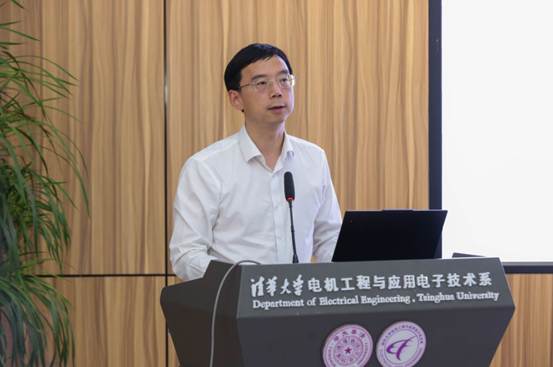
Li Zhu delivered a speech titled “China’s Power Market Development Practices for Adapting to High-Proportion New Energy”, introducing the overall progress of China’s power market reforms, the general framework of the current market mechanism, and the main outcomes of mid- and long-term, spot, and ancillary service markets. He analyzed the key challenges facing China’s power market construction under increasing new energy penetration and proposed primary ideas for improving and innovating market mechanisms to adapt to high-proportion new energy.

Prof. Michael Pollitt presented “Power Markets and Carbon Markets: European Experiences”, focusing on Europe’s practical experience in integrating power and carbon markets and exploring lessons for China. Starting from the evolution, operation mechanisms, and synergy of European power and carbon markets, he discussed how market mechanisms can drive deep decarbonization while ensuring energy security and market efficiency, further demonstrating that the coordinated development of power and carbon markets is a core pillar of low-carbon energy policy. He also analyzed Europe’s carbon market development in the context of the 2021–2023 energy crisis.
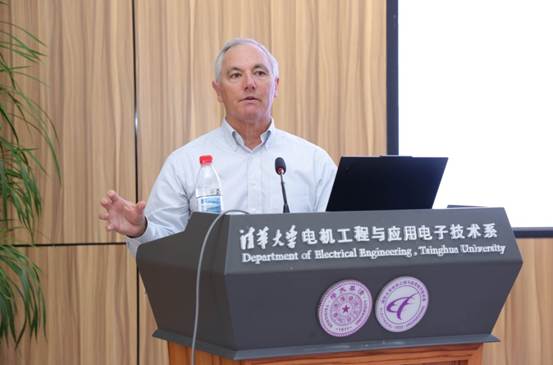
Prof. Ross Baldick delivered a lecture titled “New Ancillary Service Systems and Inertia Support in North American Power Markets”, reviewing the development background of ancillary services in North America and systematically explaining the classification of “traditional” and “new” ancillary services, as well as the coordinated optimization mechanism between ancillary services and energy in market design. He focused on the increasingly prominent grid inertia issues arising from thermal unit retirements, emphasizing the important role of inverter-based resources in providing ancillary services. To address the challenge of defining storage requirements for inverter-based participation, he innovatively proposed a new inertia support mechanism, providing a theoretical framework and practical approach to tackle the issue.
[Roundtable Discussion]
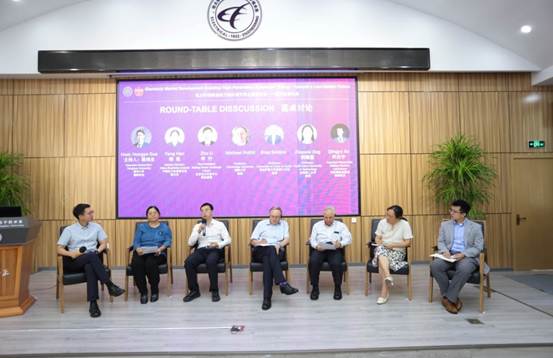
The roundtable discussion was chaired by Associate Researcher Guo Hongye of Tsinghua EEA, with participation from Li Zhu, Deputy General Manager of Beijing Electric Power Trading Center; Han Fang, Deputy Director of the China Electricity Council; Prof. Michael Pollitt of the University of Cambridge; Prof. Ross Baldick of the University of Texas at Austin; Prof. Jing Chaoxia of South China University of Technology; and Associate Researcher Xu Qingyu of Huairou National Laboratory. The discussion centered on the theme “Power Market Development and Low-Carbon Energy Transition,” focusing on topics such as the construction of a unified power market, capacity mechanism design, price cap and floor settings, and ancillary service types.
Topic 1: How can unified power market construction break regional barriers and promote efficient resource flow?
Michael Pollitt noted that the current international trend in unified power markets is a growing emphasis on cross-border transmission capacity by individual countries. In practice, even with a unified algorithm to coordinate operations between regions, if actual transmission capacity is lacking, independent regional price systems often form. Some European countries have experienced this: fearing that grid interconnection would raise local electricity prices, they deliberately restricted cross-border transmission capacity to maintain low local prices. Therefore, there is an urgent need to effectively release existing transmission capacity and establish reasonable transmission capacity mechanisms to ensure consumer interests are not compromised.
Ross Baldick further added that it is necessary not only to increase the utilization of existing transmission facilities but also to scientifically plan new transmission corridors, especially those connecting areas rich in high-proportion renewable energy. Using the large-scale wind development in Texas as an example, he demonstrated the crucial role of interregional grid interconnections in enabling wide-scale optimal allocation of energy resources.
Li Zhu emphasized that building a nationwide unified power market system is an inevitable choice for China, which requires careful coordination of interprovincial differences. He proposed: first, further enhance interprovincial trading flexibility, including daily continuous operation of interprovincial mid- and long-term markets, centralized bidding for full-network channels in interprovincial mid- and long-term trading, and expansion of interprovincial mid- and long-term spot trading pathways; second, strengthen effective linkage between interprovincial and intraprovincial transactions, aligning provincial trading rules with the national “1+6” foundational rules and narrowing differences in trading products; third, gradually integrate interprovincial and intraprovincial transactions, using approaches such as “unified pricing, coordinated clearing” to ultimately achieve nationwide optimized clearing, while considering provincial balance constraints and East-West electricity price differences.
Topic 2: How should the power market design capacity mechanisms to support cost recovery and investment guidance for conventional power sources?
Han Fang stated that capacity mechanisms are key to maintaining system adequacy. Internationally, approaches fall into three categories: capacity payments, capacity markets, and scarcity pricing. At present, China primarily uses capacity payments; once the spot market matures, capacity markets may be piloted. Scarcity pricing can accurately reflect the value of capacity shortage periods but requires stringent market prerequisites, so it is more suitable as a long-term option.
Jing Chaoxia pointed out that the multifaceted characteristics of electricity as a commodity mean that purely short-term marginal-cost-based scarcity pricing mechanisms risk failing to guide generation investment and ensure supply security. On one hand, the generation industry is capital-intensive and requires long-term, stable revenue expectations to promote investment and reduce financing costs; on the other hand, electricity supply and demand fluctuate over time and space, causing spot prices to vary sharply, resulting in high revenue uncertainty for generators. Furthermore, imperfect market trading and pricing mechanisms, low price caps, and renewable energy subsidies can depress spot prices below ideal levels for optimal investment. As the core institution of power market systems under new power system conditions, capacity mechanisms aim to solve the “missing money” problem for certain or all generation types and the “missing market” problem, i.e., the absence of long-term tools to hedge spot price risks for generators. Construction of capacity mechanisms can draw extensively from international experience with integrated solutions, including: Australia’s parallel implementation of distributed capacity obligations alongside a high-price-cap spot market; Germany’s exploration of a combined centralized capacity market and distributed capacity obligations; the UK’s use of contracts-for-difference for expected revenue from new energy and conventional generation capacity, with locational transmission pricing to guide generation and load placement and reduce system costs; PJM’s setting of capacity market price caps based on net-converted costs while accounting for market power and excess revenue. We propose a phased, multi-angle innovative integrated capacity mechanism to achieve multi-objective balance. First, closely link national long-term energy planning with market mechanisms to determine capacity auction scale and siting guidance. Second, establish a tiered capacity obligation system: initially assign obligations to electricity users or retailers, reinforcing market participants’ supply responsibilities; then have grid companies or market operators assume a “backstop” role, procuring unmet capacity through a centralized market and allocating costs to participants failing to meet obligations; finally, allow obligated participants to fulfill requirements within a capacity range according to their preferences, linked to load-shedding strategies during shortages. Participants may fulfill obligations via self-built plants, long-term PPAs, or purchasing capacity certificates, flexibly adapting to operational needs. Third, implement revenue caps to prevent excessive profits. For units compensated through the capacity market, beyond basic obligations such as “physical availability” and spot market declarations, additional revenue limit rules prevent double compensation for the same capacity in energy and capacity markets, safeguarding fairness and user interests. Lastly, innovate revenue cap settlement mechanisms, drawing on and upgrading the renewable “sustainable price settlement mechanism” logic. First, base settlement on long-term revenue rather than spot prices for precise profit control; second, use industry-wide operating data as a reference, not individual data, imposing some market risk on participants and enhancing incentives; third, base settlement on expected revenue rather than actual revenue, minimizing market distortion. Through these innovations, the mechanism ultimately achieves coordinated goals of reliable supply, risk reduction, and market vitality.
Xu Qingyu noted that the current core contradiction lies in the insufficient coordination between power system planning and market mechanisms: at the planning level, ensuring stable power supply requires a coordinated layout of various reserve resources, yet the market side has not formed corresponding price signaling or revenue assurance mechanisms, making it difficult for the value of reserve resources to be effectively realized through the market. From a functional perspective, capacity markets should not be limited to the single goal of “ensuring power supply” but also perform broader systemic roles, such as providing a clear cost recovery path for “bridging power” that serves a transitional function, while further enhancing the robustness of the power system against fluctuations and risks through market-based means. To promote mechanism optimization, the key is to convert complex and diverse planning requirements into quantifiable and assessable multidimensional capacity indicators. On this basis, differentiated capacity auctions should be conducted at provincial, municipal, and regional levels according to local power supply-demand characteristics and industrial structure differences, thereby building a capacity market mechanism suited to the new power system. In addition, three core technical issues must be considered: first, whether capacity resources should participate in the market in a “quantitative” or “priced” manner; second, whether the market operation mode should adopt decentralized decision-making or centralized coordination; third, how to more accurately capture and reflect true user-side capacity demand through technical means, avoiding supply-demand mismatches.
Ross Baldick expressed reservations about the practical effectiveness of capacity markets. He argued that capacity markets may be susceptible to manipulation by interest groups, resulting in overbuilding of generation capacity, resource waste, and inefficiency. The key issue lies in the insufficiently scientific and rigorous setting of capacity demand standards, which should be established more strictly to prevent flaws in market design.
Topic 3: When designing the upper and lower limits of electricity market prices, how can demand-side flexibility be stimulated while ensuring system stability and future development?
Xu Qingyu suggested that evaluating the reasonableness of electricity price caps and floors requires comprehensive consideration of five core factors: user affordability, generation-side cost recovery capability, mitigation of market manipulation, ancillary service costs, and externality value reflection. On user affordability, a prominent issue exists: current user-side electricity prices are mostly calculated using province-wide weighted averages. Raising the price cap could cause certain users or local areas to trigger widespread price increases affecting all users. Therefore, he recommended exploring differentiated zonal and classified price cap management mechanisms, e.g., classifying users by load type and setting different price limits to ensure fairness.
Jing Chaoxia also advocated classified management of price caps. For the generation side, different caps could be set depending on whether capacity compensation is received, the amount of compensation, and prescribed revenue ranges. For the user side, differentiated price limits could be applied according to risk tolerance: users with higher risk tolerance could be exposed to wider price fluctuations to effectively incentivize demand response.
Michael Pollitt emphasized that the power market should pay more attention to the demand side: small electricity users, such as households and small businesses, are less sensitive to daily price fluctuations but can provide effective response during power supply emergencies, making their participation valuable. Retailers should not only transmit prices but also guide users to adjust consumption through effective mechanisms. To achieve deep demand-side response, mechanisms based on long-term retail contracts should be promoted, allowing users to pre-authorize retailers to manage their electricity devices under specific conditions; compared with relying solely on spot prices, this approach is more reliable and easier for users to accept.
Topic 4: When should new types of ancillary services be introduced? Should the ancillary service market operate jointly with or independently from the electricity market?
Han Fang pointed out from China’s practical experience that the domestic ancillary service market was launched early and now covers the whole country, with main services including frequency regulation, peak regulation, reactive power, and black start. Currently, three major issues exist: the service types are too limited, compensation prices do not match actual costs, and cost pass-through mechanisms are not smooth. Ancillary service costs are mainly borne by generation companies.
Li Zhu noted that with high renewable penetration, ancillary services are increasingly important, and market construction should first clarify the types of services required by the system. Referring to the UK, key capabilities required for a zero-carbon grid are divided into seven categories: geographically dependent—system stability, voltage control, thermal stability constraints, and black start; geographically independent—frequency regulation, intraday flexibility, and long-term adequacy. The timing for introducing new services should be based on objective system needs, with monitoring and trend analysis of related system operation indicators; when an indicator reaches a critical threshold and forms a bottleneck, the corresponding ancillary service should be introduced.
Ross Baldick emphasized that action should not be delayed until urgent needs arise—for example, waiting until synchronous generator inertia levels fall to dangerous lows before introducing new services—but instead should involve proactive systemic planning.
Han Fang stated that currently, ancillary service types should be scientifically designed, compensation levels improved, and reasonable cost pass-through mechanisms established according to energy transition needs. New services should not be implemented uniformly but adapted to local conditions, fully considering provincial system structures and generation characteristics.
Li Zhu stressed the need to balance technical necessity with market operability. Regarding market model choice, joint clearing and independent clearing each have pros and cons. Joint clearing allows finer and more efficient clearing but can complicate early-stage markets. Therefore, he recommended a dynamic adjustment strategy: adopt a relatively independent design initially, then gradually optimize coupling as the market matures.
This conference was hosted by Tsinghua University and the China Energy Research Society, organized by the Department of Electrical Engineering and Applied Electronics of Tsinghua University and the China Energy Research Society’s Power Market and Carbon Market Committee, and co-organized by the Tsinghua Energy Internet Innovation Institute and the China Energy Research Society Youth Working Committee.
We thank multiple media outlets, including Southern Energy Observer, Proceedings of the Chinese Society of Electrical Engineering, Automation of Electric Power Systems, Journal of Modern Power Systems and Clean Energy, Transactions of China Electrotechnical Society, China Electric Power News, China Economic Information Service, China Energy News, China Power News, and China Reform News, for their close attention and comprehensive coverage of this conference.

















 News & Events
News & Events